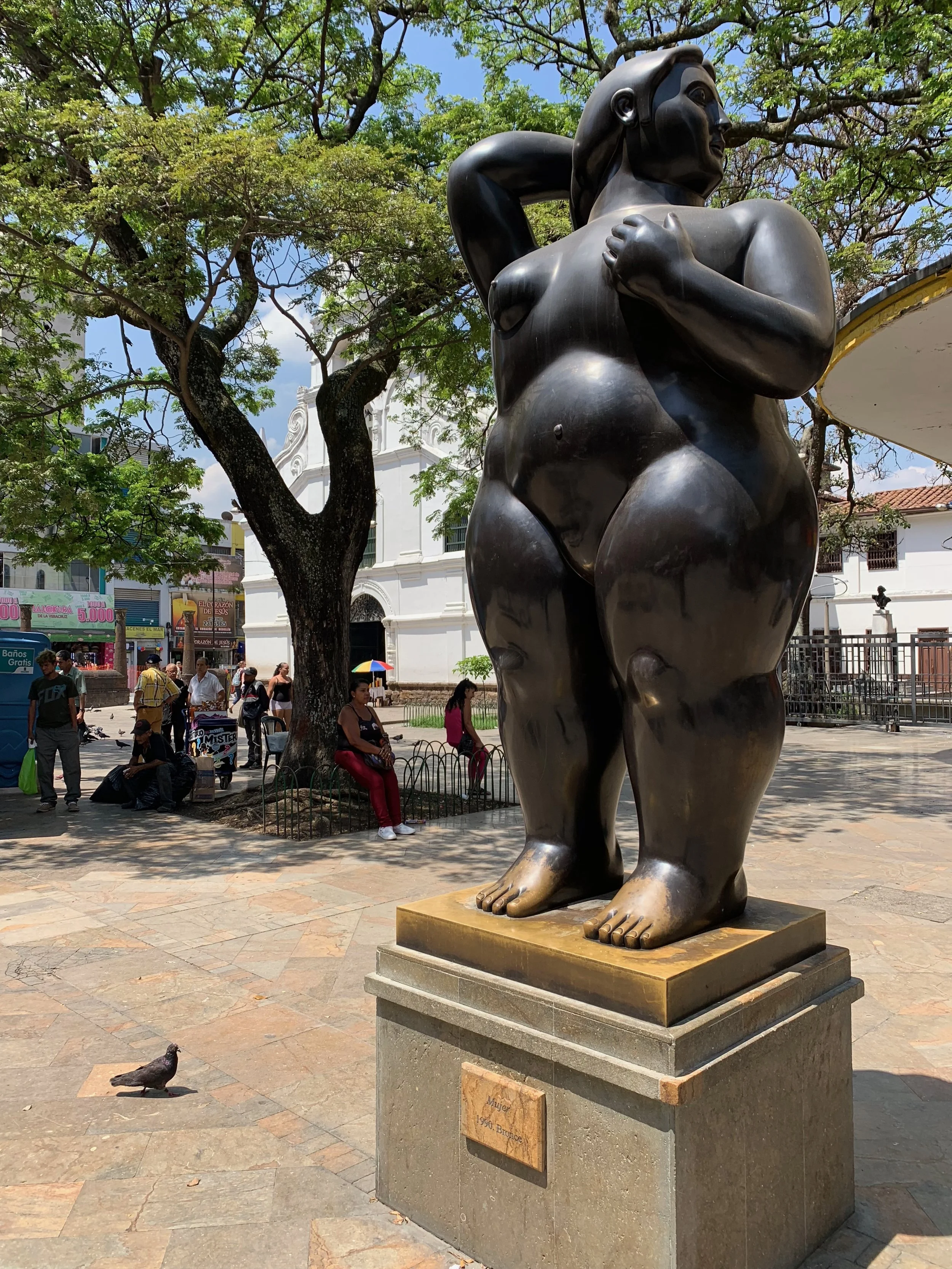Medellín Travel Guide
/Medellin is a huge city enveloped in a valley of the Aburra mountains. Looking out from the windows of the pristine metro at the brown dots of houses peeking out behind concrete towers and fading into the haze of the mountains was a dreamy sight. The history of Medellin, while long, is dominated by the relatively recent events of political upheaval, community rebellion, and most of all, drug trafficking and gang creation. While we usually travel to places where the most influential history is centuries or millenniums past, the events of Medellin’s predominate history is decades old and happened during our lifetimes. Because of that you will hear and see different sides and opinions of what happened, but one thing is clear, is that Medellin is no longer the most dangerous place in the world, and grew past that statistic quickly. It’s a bustling city full of people who have pulled themselves up through hardship and are eager to take in travelers and visitors to show them what they’ve become.
Stay
El Poblado is an upscale and friendly area which is very popular with tourists. If I had more time to research I would have looked into other areas (such as Laureles) but for a quick trip and not much planning beforehand, I was happy in El Poblado. It’s walkable (although there are some hills) and has many bars and restaurants to hit. It’s also close to a metro station so it’s easy to explore other areas.
574 Hotel - Where I stayed, off the beaten path in a quiet neighborhood, minimalistic decor but stylish and chic, small outdoor cafe for breakfast, close to the train station, your taxi driver will have a hard time finding it.
Charlee Lifestyle Hotel - Right in the thick of the touristy square area, has a decent rooftop, pretty rooms, and nice amenities.
The Art Hotel - Trendy, dark, industrial, reviews seem to mention how loud it is quite often, good location in the touristy area.
Eat/Drink
Carmen - pre fixe or a la carte, inventive dishes and drinks, love the cocktail menu, the ceviche was delicious. There is one in Cartagena as well but I liked the aesthetics of this one better.
OCI.mde - Al fresco, big tables, great dishes and drinks, in a quiet, upscale part of El Poblado.
Cerveceria Libre - Small brewery with house beers and a few others on tap, super friendly, in a very industrial area, gives you unlimited little snacks while you sit.
Mercado del Rio - An indoor market reminiscent of popular set ups in cities around the world. You can get everything from sushi to paella to pizza. The downstairs bar got very busy around 5:30pm.
3 Cordilleras - Large brewery in the industrial area with house beers and a few others on tap.
Pergamino - Popular, small, locally owned coffee in Medellin.
El Botanico - Large, open, beautiful space. Go for drinks before OCI.mde.
Mondongo’s - Very popular, and not just among tourists, for typical Colombian food.
Do
Real City Tour - a free tour of downtown with a lively and informative guide. A great way to see the city and learn more about it’s history.
Comuna 13 Tour - a tour of what used to be the most dangerous place in the world. This neighborhood is transforming with street art, accessibility, and community programs. I suggest a private tour over a group.
Coffee Tour - Go into the mountains and check out where the beans are being harvested. Colombia is the 2nd largest exporter of coffee beans.
Plaza San Antonio - A large square where a terrorist attack hit and ruined a Botero statue. It’s iconic of the change happening in the city but it’s recommended not to go alone as our guide warned of continuing violence and petty crimes in the area.
Antioquia Museum - A good sized museum with a lot of Fernando Botero, including his own personal collection from other artists. He essentially funded and donated enough to create this museum. About 50% contemporary/modern art.
Plaza Botero - A huge plaza with 23 large sculptures from Fernando Botero. A great spot to sit down and relax in the middle of the craziness of the downtown.
Botanical Garden - Beauty in the middle of the city
Pueblito Paisa
Museo Arte Moderno Medellin - As the name suggests.
Lleras Park - A small park in the middle of the touristy section of El Poblado. A good place to people watch.
Ride metro - Seriously, get out and ride the metro. It’ll take you everywhere, it’s cheap, it’s immaculate, and it’s essentially Medellin’s pride and joy.
The Look
City smart. Hip. A little sexy. Jackets and scarves for nighttime. Black is okay.
Safety
It was home to the most dangerous place in the world at one point, but much has changed here. Still, locals wear their backpacks on the front of their bodies and you will be warned about pickpockets. El Centro, the downtown area, is bustling during the day time but becomes a bit more sketchy and elusive at night, so you are warned against loitering there. San Antonio Plaza, the site of a terrorist bombing in 1995, is a must-see because of the Birds of Peace, but is also said to be a relatively unsafe spot even out in the open. If you stick to the high traffic areas and are mindful about your surroundings and belongings, I don’t think you have much to worry about. If you want to venture into the outskirts and outer neighborhoods it may be best to bring a guide.













































































